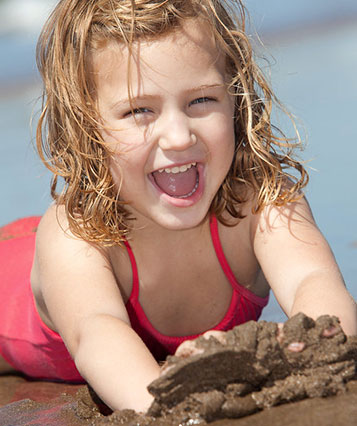Pulp Therapy for Kids
Pediatric pulp therapy, also known as "nerve treatment," is used to remove infected pulp from the inside of a tooth. The two most common reasons for pediatric pulp therapy are decay and tooth trauma. By removing infected pulp tissues, a tooth can be preserved rather than extracted.
There are two types of pulp therapy that Brent J. Porter, D.D.S., your Santa Cruz pediatric dentist may do: pulpotomy and pulpectomy. A pulpotomy is performed when only a portion of the pulp needs to be removed, whereas pulpectomies are used to remove all of the pulp tissues. Both procedures can be performed with your child under a local anesthetic and analgesia to aid in pain management and anxiety relief.
Following a pulp therapy treatment, the tooth is most commonly restored with a full coverage crown that will remain in place until a permanent adult tooth replaces it.
Did you know, if your child has untreated cavities or has fractured his or her tooth, bacteria can accumulate inside the tooth and infect the pulp tissues? Without pulp therapy, bacteria can spread to infect the entire tooth including the bone beneath the tooth, eventually causing pain and total tooth loss.
My child's infected tooth is a baby tooth that’s going to fall out anyway. Does it really require pulp therapy?
Yes. Primary teeth serve as important space savers for adult teeth, not to mention children need them for chewing and speaking. Furthermore, an untreated tooth infection can become painful, spreading to other areas of the body, and become severe over time.
What should I expect during my child's pulp therapy treatment?
Dr. Brent J. Porter, your Santa Cruz pediatric dentist, will open the top of the tooth to reveal the pulp chamber and its inner canals. Depending on whether your child is undergoing a pulpotomy or a pulpectomy, either the entire pulp tissue or just the part inside the crown will be removed and then filled with a biocompatible material. The tooth will be capped, and your child will be allowed to return home immediately following the procedure.
Will I need to follow any special post-operative instructions following my child's procedure?
You will be given instructions for care before you leave from your visit. Expect your child's tooth to be sore for a couple of days following the procedure. During this time, you may want to prepare a diet of soft foods that require minimal chewing. If pain persists beyond a few days, please contact our office.
For more information please contact the office of Brent J. Porter D.D.S., Santa Cruz Children’s Dentist (831) 459-9802



